Discovering snakes in or around your home can be an unsettling experience. Whether you’re dealing with harmless garden snakes or potentially dangerous species, having effective snake traps on hand provides peace of mind and protection for your family. In this comprehensive guide, we’ll review the top snake traps of 2025, explain how they work, and provide expert tips on placement and usage to ensure your property remains snake-free.
Quick Picks: Best Snake Traps of 2025

Editor’s Choice

People’s Choice

Best Reusable
Top 3 Best Snake Traps Comparison
| Product | Type | Best For | Location | Rating |
|---|---|---|---|---|
| Catchmaster Baited Snake Glue Traps | 12 Disposable Glue Trays | Small to Medium Snakes | Indoor | 5/5 |
| Harris Super-Sized Snake Glue Trap | Extra Strength Glue Trap | Larger Snakes | Indoor/Outdoor | 4.5/5 |
| CAHABA Large Snake Trap | Reusable Corrugated Plastic | All Snake Sizes | Indoor/Outdoor | 4/5 |
Why You Need Effective Snake Traps
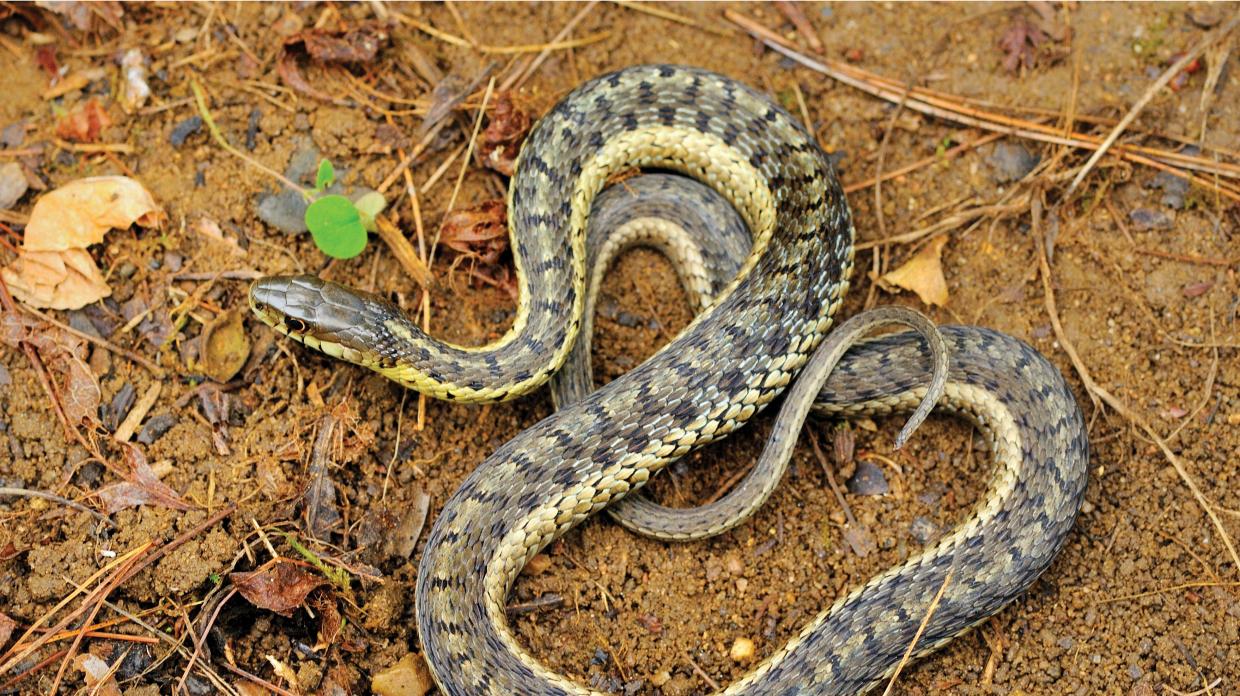
Snakes are secretive creatures that often go undetected until they’re encountered unexpectedly. While many species are beneficial for controlling rodent populations, having them in your living space can pose risks to your family’s safety and peace of mind. Effective trapping solutions provide a humane and reliable way to manage snake intrusions without requiring specialized handling skills or potentially dangerous confrontations.
Family Safety
Protect children and pets from potential snake encounters and bites
Home Security
Prevent snakes from establishing nests in your home’s structure
Peace of Mind
Eliminate worries about unseen snake visitors in your living space
Detailed Reviews of the Best Snake Traps in 2025
After extensive testing and research, we’ve identified the top three snake traps currently available. Each offers unique advantages depending on your specific snake control needs.
Catchmaster Baited Snake Glue Traps
Editor's ChoiceHow Does It Work
How to Use
- Place traps along walls and in corners where snakes are likely to travel
- Position multiple traps to create a perimeter in affected areas
- Check traps regularly and replace as needed
- For humane release, apply cooking oil to dissolve the adhesive
- Comes with 12 traps for comprehensive coverage
- Proprietary adhesive formula ensures reliable captures
- Non-toxic and safe for use around family when properly placed
- Effective against various snake species
- Made in the USA with quality materials
- Single-use design requires replacement after each capture
- Less effective in dusty environments
- Not suitable for outdoor use in rainy conditions
Place Catchmaster traps in a grid pattern in areas with known snake activity. This creates multiple capture opportunities and increases the likelihood of successful trapping.
Harris Super-Sized Snake Glue Trap
People's ChoiceHow Does It Work
How to Use
- Place in areas with confirmed snake activity
- For outdoor use, position in shaded areas away from excessive moisture
- Can be used flat or folded into a tunnel configuration
- For larger snakes, multiple traps can be placed side by side
- Extra-large size ideal for bigger snake species
- Industrial-strength adhesive ensures secure captures
- Versatile for both indoor and outdoor use
- No assembly required - ready to use immediately
- Non-toxic formula safe for household environments
- Single trap per package may require multiple purchases for comprehensive coverage
- The extra-strong adhesive can make humane release more challenging
- Larger size may be difficult to place in confined spaces
If you wish to relocate rather than eliminate captured snakes, apply cooking oil or vegetable oil to dissolve the adhesive. This allows for safe release of the snake in an appropriate habitat away from residential areas.
CAHABA Large Snake Trap
Best ReusableHow Does It Work
How to Use
- Place trap in areas with known snake activity
- Position along walls, fences, or other linear features where snakes travel
- For outdoor use, ensure the trap is in a location protected from direct rainfall
- When a snake is captured, the entire insert can be removed and replaced
- No tools required for assembly or insert replacement
- Reusable design reduces waste and long-term costs
- Suitable for both indoor and outdoor applications
- Replaceable glue inserts maintain effectiveness over time
- Durable construction withstands various environmental conditions
- Easy-release door facilitates humane capture and relocation
- Higher initial cost than disposable options
- Requires purchase of replacement glue inserts
- Bulkier design may be more visible to cautious snakes
If you have recurring snake issues or a large property, consider deploying multiple CAHABA traps. Strategic placement of several traps significantly increases capture rates and provides more comprehensive protection.
CAHABA Snake Trap Varieties
The CAHABA brand offers multiple trap configurations to address different snake control scenarios:
Large Snake Trap
Designed specifically for larger snake species, includes two large catch inserts
Foldable Snake Trap
Space-saving design with one replaceable glue catch insert
Lift-Top Combo
Specialized design for capturing large snakes with easy-access top
Small Snake Trap
Compact option with three catch inserts for reptiles up to 1.5 feet
Expert Guide to Snake Prevention and Trapping
Effective snake control combines preventative measures with strategic trapping. Following these expert recommendations will help maximize your snake management efforts.
Prevention Strategies
Never attempt to physically catch or handle a snake unless you are absolutely certain of its identity and have experience in safe handling techniques. Instead, rely on traps to eliminate risk of bites and injury.
Strategic Trap Placement
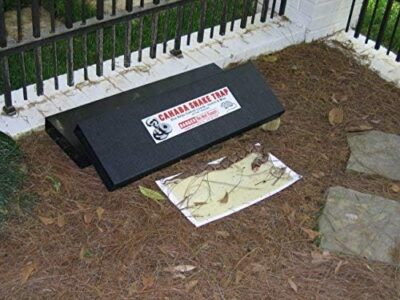
Along walls and fences where snakes travel
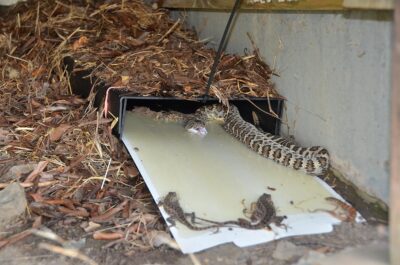
Near water sources which attract snakes
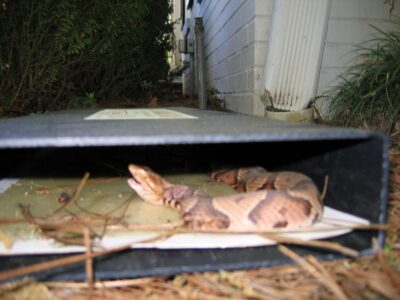
At potential home entry points
Effective Trapping Techniques
Success in snake trapping largely depends on correct placement and maintenance of your traps. Consider these expert tips:
Professional Trapping Tips
- Position traps perpendicular to walls to intercept traveling snakes
- Create “funnel” configurations with multiple traps to guide snakes toward capture
- Check traps daily to prevent unnecessary suffering of captured animals
- Replace or refresh traps that have become dusty or wet
- Increase trap density in areas with confirmed snake sightings
Humane Capture and Release
While eliminating snakes from your property is the primary goal, many homeowners prefer humane approaches to snake control. Most glue-based traps allow for the safe release of captured snakes:
To release a snake caught in a glue trap, gently apply cooking oil or vegetable oil to dissolve the adhesive. This allows the snake to free itself without injury. Transport the snake to a suitable natural habitat at least 5 miles from residential areas before release.
Frequently Asked Questions
Do snakes eat peanut butter?
Snakes are carnivorous reptiles that primarily feed on rodents, birds, eggs, amphibians, and other small animals. They do not naturally consume peanut butter or other plant-based foods. Some snake traps may use peanut butter-scented attractants, but these work by mimicking prey scents rather than as a direct food source.
Do glue snake traps kill the snake?
Glue traps themselves do not kill snakes. They immobilize the reptile by securing it to an adhesive surface. Once captured, the snake can either be humanely released using vegetable oil to dissolve the adhesive or disposed of according to local regulations. The fate of the snake is determined by the trap user rather than the trap itself.
Where can I buy snake traps?
Snake traps are available from various retailers including home improvement stores like Home Depot and Lowe’s, general merchandise stores like Walmart, and online marketplaces such as Amazon. Online retailers typically offer the widest selection and competitive pricing, while physical stores provide the advantage of immediate availability.
How do I know if I have snakes in my house?
Signs of snake presence include shed skins, small droppings that resemble bird droppings but with a white cap, unusual pet behavior, unexplained rustling sounds in walls or attics, and direct sightings. Snakes are secretive, so visual confirmation is less common than finding these indirect indicators.
Are snake traps safe around children and pets?
Most snake traps use non-toxic adhesives that pose minimal chemical risk to children and pets. However, the traps themselves should be placed in locations inaccessible to curious children and pets to prevent accidental contact with the adhesive surface. Follow manufacturer guidelines for safe placement.
Conclusion: Choosing the Right Snake Trap for Your Needs
Effective snake control begins with selecting the appropriate trapping solution for your specific situation. Each of our top recommendations offers distinct advantages.
By combining strategic trap placement with preventative measures, you can effectively manage snake encounters and create a safer environment for your family. Remember that consistency is key—maintain your trapping program even after initial successes to prevent future incursions.
While removing snakes from your immediate living spaces is important for safety, these reptiles play valuable roles in ecosystem balance by controlling rodent populations. Consider relocating non-venomous snakes to natural areas rather than destroying them when possible.

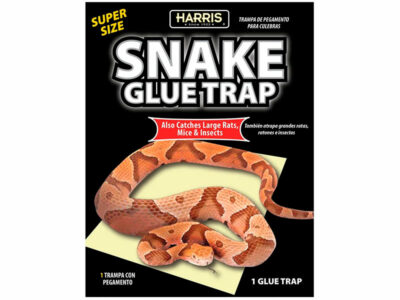
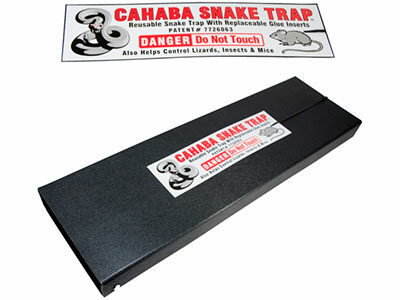
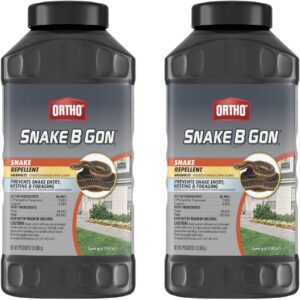

I get deer mice in the house, and catch/remove them in a steel live-trap with drop-down ramp doors that pop back up again when the mouse is inside. I bait it with a glob of peanut butter, and the mice pretty regularly get caught (even repeat offenders, I suspect).
When mice enter, they often eat up the peanut butter, always leave a lot of droppings inside, and do not escape the trap. I’ve found an occasional alternative pattern though, in which the peanut butter is partly eaten one night, perhaps finished up the next night, with no mouse droppings, and nobody in the trap. Unless the offender is small enough to get through the airholes, yet big enough to eat up a large glob of peanut butter, or else smart enough to figure out how to pull the trapdoor down and exit, then it has to be something long and narrow enough to enter a mouse door and hold it open while eating the peanut butter inside, and then withdraw the way it came.
The only thing plausibly in my house I can visualize that could do this is a snake, and in fact I have just confirmed that I do have a 2-3 foot long snake in the house. I think it may be an eastern fox snake.
I’m not too concerned about the snake, but I wanted to take issue with the dismissal of their eating peanut butter. I’m surprised too, since snakes should all be carnivores, but my experience suggests that at least some snakes do actually like peanut butter!
glue traps are banned in some places and not used by many places because they are inhumane to other animals like kittens, birds, etc.
what a stupid reply. birds, cats cant get in the small hole;thin made for snakes. ok if rats, mice get in.
Black snakes (King) are the snakes you want in your yard and garden. The only thing I don’t like about the snake trap idea is that it isn’t selective. I don’t want to kill King or other snakes because they eat spiders and field mice and other yucks – I am concerned about copperheads, though.
a good snake is a dead snake. it eats frogs, chameleions, gecko’s , Tukays, I like to have around. train them to eat rats and mice only; they can live.
our snakes are 3′ to over 4′ so the glue box is not even long enough.
i bought several of the large snake traps. But all inside was a glue strip, no snake scent dots. What is on the snake scent dots, so that i may possiblly make them myself?
In the last two months we found three rat snakes. We only go to this house on weekends, so it is left with no occpants.
Best article I have read all day. (And I have been reading since 3 am when I found snake in kitchen). Thank you. Now, old house with dirt basement. Habitat modification suggestions? Cahaba traps in basement as well as upstairs living area?